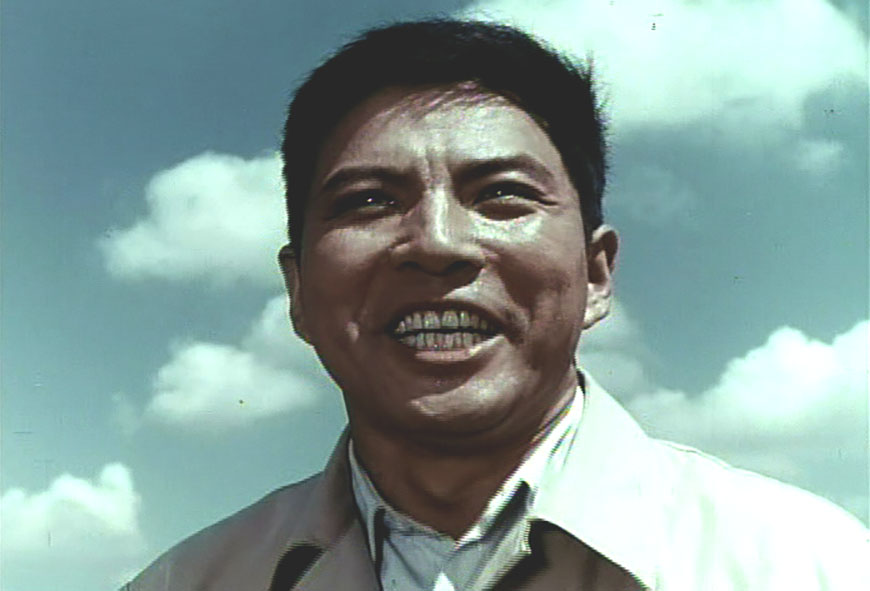
Zhang Peili
Happiness
2006
2-channel video projection
“Since year 2000, I stopped using my camera to document and instead, used more ready-mades. One of the methods I used was to dig through footage in video tapes that were already available on the market.” Zhang Peili explained in an artist statement, “I tend to focus on elements that are symbolic, follow a certain model, and involve the concept of time. These elements exemplify the revolutionary heroism and romanticism of Chinese propaganda films from the 1950s to the 1970s. They embody a healthy application of aesthetic and artistic language. I extract fragments from these old films and process them in simple ways to rid its linear structure and time background. I’m interested in how it creates the potential for a new comprehension.”
(Statements by the Artist)
Zhang Peili divides the image structure into two parts in the video installation Happiness (2006), which draws its content from the Cultural Revolution film In The Shipyard of the 70s. Zhang extracts the shots of a male protagonist talking and workers applauding and play them alternatively on repeat, thus adding a unique dramatic effect. This method of applying “image montage correction” to propaganda films allows the artist to take old cultural symbols as a piece of material and distorts the time logic of the film. Thus only personal experiences or the collective memory remain, as meanings and principles become mixed and dissolved from that particular period of time.
(Edited by Lijie Wang & Miao Zijin)

